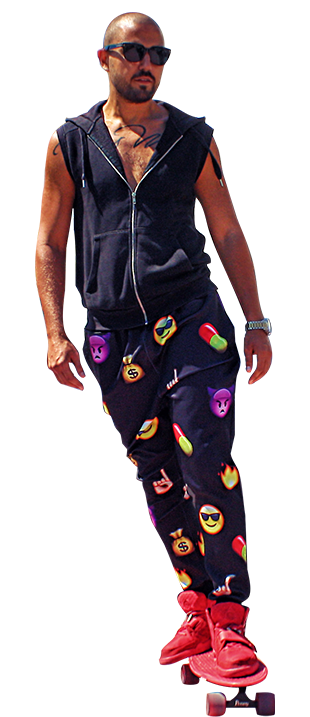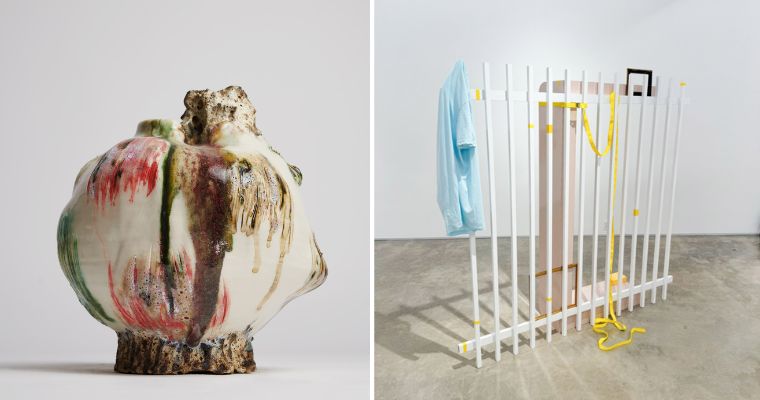
At Mindy Solomon Gallery, At left, Jane Yang-D_Haene, Untitled XII, 2024, stoneware, porcelain, glaze, 11.5 x 11 x 11. Photographed by James Lowe; At right, Leyden Rodriguez-Casanova, Gate Composition (Contingent), '24, Aluminum, enamel, particle board, laminate, MDF, PVC, cotton fabric, scouring pads, sponges, tape, 72 x 72 x 14.
As the Performing Arts season slows down, what's an art lover to do? Go gallery hopping.
The perfect opportunity happens this weekend as galleries and museums in the Allapattah neighborhood present their first happy hour on Saturday, June 1 from 5 to 8 p.m.
Participating galleries and museums include El Espacio 23, Rubell Museum, La Cometa, Voloshyn Gallery, KDR305, Andrew Reed Gallery and Mindy Solomon Gallery.
And while Saturday is Happy Hour, the galleries are open and invite visitors to escape the heat and enjoy art all summer long.
At Mindy Solomon, 848 NW 22nd St., Miami
Mindy Solomon is presenting "Events in Time," a two-person exhibition of Frances Trombly and Leyden Rodriguez-Casanova. This marks the first exhibition of the two artists at the gallery that includes a series of new works in conversation.
This new body of work continues the artists’ interest in abstraction one with craft at her core and the other with readymade artifacts. They come together through metaphoric ideas around the mathematical theory of spacetime and special relativity.
The sophisticated, expressive works of artist Jane Yang D’Hane are also at Mindy Solomon in the artist's first Miami Solo Exhibition debut. Departing from her roots as a South Korean artist steeped in the tradition of the moon jar form an iconic symbol of Korean Culture, D’ Haene has positioned herself as a neo-practitioner. She incorporates her own language and life experiences into 3-dimensional investigations of pain, joy and wonder. Siennie Lee, the untouchable grandeur and mystery of the Antartica, Lee endeavors to convey a sense of atmosphere and wonder in her immersive installation.
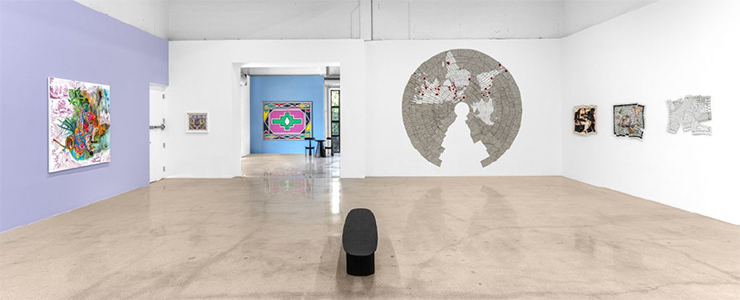
At La Cometa, Collective Exhibition: "What's mine, what's yours"
At La Cometa, 1015 NW 23rd St., Miami
Collective Exhibition: "What's mine, what's yours" Through June 15.
The notion of decolonial thinking, beyond the construction of our epistemologies, also poses the possibility of connecting with other ways of configuring meanings and creating our systems of knowledge through forms that escape logic.
The localization of thought, then, like that of affections, originates not only from a geographical place but also from a metaphorical one. And it is in these places, and through the symbols we create, that we conceive of ourselves as a society and construct a new narrative.
In "What’s Mine, What’s Yours," three artists from different generations and diverse backgrounds reflect on the colonial wound that pierces us. And how, by recognizing ourselves in it, we create possibilities of existence and narrate ourselves as individuals and as a collective. Dr. Esther Mahlangu (South Africa, 1935) shoulders the weight of this tradition, transporting it into public space and traditional mediums. Through an act of displacement, Mahlangu appropriates one of the most sophisticated manifestations of capital, thereby symbolically recolonizing a closed space and opening it to the world. Miguel Ángel Ríos's maps (Argentina, 1943) revisit traditional cartographic representations to challenge predominant narratives through the myths that have shaped our understanding of the Americas.
The maps supporting Justyna Kisielewicz's paintings (Poland, 1983) expand in plastic richness and emotion. Kisielewicz contemplates the ongoing consequences of colonization: land exploitation, human exploitation, and symbolic devastation.
At El Espacio 23, 2270 NW 23rd St., Miami
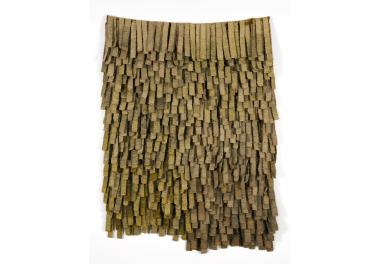
"To Weave the Sky: Textile Abstractions from the Jorge M. Pérez Collection" celebrates numerous textile-based works from the Pérez collection many of which have never been publicly exhibited before and engages these acquisitions as focal points from which to structure creative dialogues with artworks presented in other mediums.
Featuring works from over 100 intergenerational artists from around the world, "To Weave the Sky" is inspired by weaving’s traditional ties to abstraction and geometry, landscape and the organic, tactility and intimacy, and indigenous cosmologies and ritual. Curated by Tobias Ostrander in close dialogue with curators of the Pérez Collection, Patricia M. Hanna and Anelys Alvarez, the show attempts to uncover contemporary fascination with the medium one that has been historically marginalized to the genre of craft within Western art contexts.
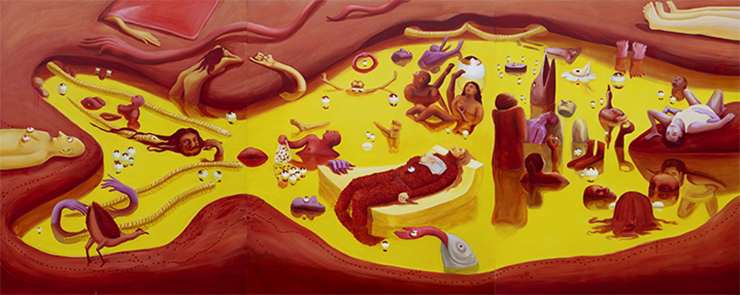
Paula Turmina: "Drawn (in) to the land"
At Andrew Reed, 800 NW 22nd St., Miami
Paula Turmina: "Drawn (in) to the land" is an exhibition of new work by London-based Brazilian artist Paula Turmina.
At KDR, 790 NW 22nd Str., Miami 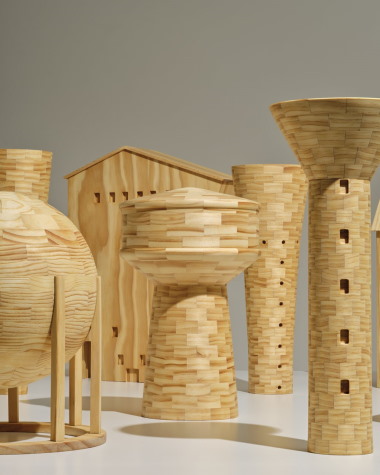
Sam Stewart, Anonyme Skulpturen: Anonyme Skulpturen," a solo exhibition of new works by New York-based artist Sam Stewart. This exhibition marks his first with the gallery and will be on view from May 10 through June 8, 2024.
In "Anonyme Skulpturen," Stewart embarks on an introspective odyssey, drawing inspiration from the influential German couple Bernd and Hilla Becher. The Becher's work, which documented structures often overlooked and in decline during the Information Age, serves as a rich historical backdrop for Stewart's exploration.
Voloshyn Gallery, 802 NW 22nd St., Miami
Haunted II
Haunted II brings together four artists Lorenzo De Los Angeles, Harold Mendez, Aneta Grzeszykowska, and Matteo Callegari whose works are permeated by strong traces of the esoteric and the otherworldly; works, in other words, that turn the ways in which they may be haunted into potent conceptual and visual counterproposals that address and chip away at normative narratives, in order to enlarge the very ways in which we define ourselves and what the borders of our world may be.
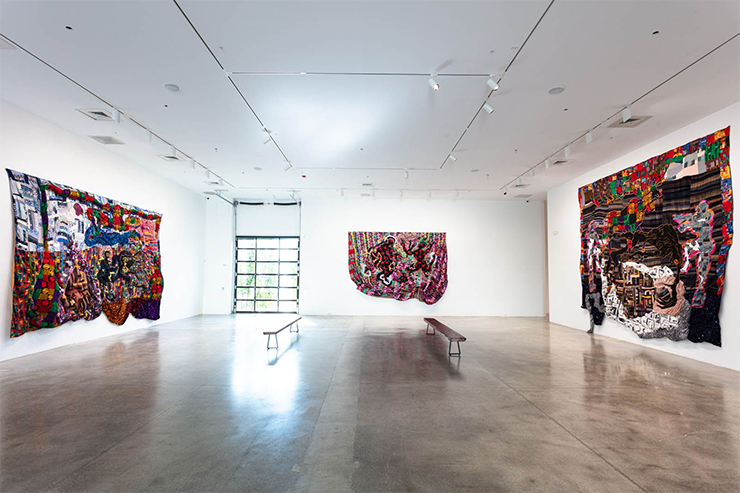
Rubell Museum, Basil Kincaid: Spirit in the Gift."
At Rubell Museum, 1100 NW 23rd St., Miami
"Basil Kincaid: Spirit in the Gift:" The post-disciplinary practice of Basil Kincaid, a St. Louis-born artist who splits their time between the U.S. and Africa, examines relationships between ancestry, place, and the contemporary constructed self. Throughout their work, Kincaid incorporates quilting, collaging, photography, installation, performance, and the use of found materials.
Alejandro Piñeiro Bello: Havana born, Miami-based artist Piñeiro Bello focuses his practice on the Caribbean diaspora, Cuba, and the surrounding island nations’ cultural identities, imagery, and history. He paints the sociocultural mystic splendor of the Caribbean’s culture using traditional materials, such as oil on raw linen or burlap, and works with a strong color palette to create images that capture the region’s fecundity.
Singular Views: Los Angeles: Los Angeles artists have always been a cornerstone of the Rubell Museum and in 2006 the group exhibition Red Eye: L.A. Artists from the Rubell Family Collection explored the cross-generational influences of 36 artists working between the 1980s and mid-2000s.
This exhibition, Singular Views: Los Angeles, reflects the Rubells’ continued commitment, 17 years later, to discovering and sharing new art created in this multifaceted city. Singular Views focuses on 16 artists working across painting, sculpture, and video who mine the psychological, emotional, and imagined spaces that compose Los Angeles, creating their own contemporary archaeology and cultural anthropology. Many of the artists utilize physical backdrops that reference storefronts, automobiles, graffiti-laden facades, and human flesh. The remnants of a post-industrial age mixed with highly personalized motifs characterize these works.




